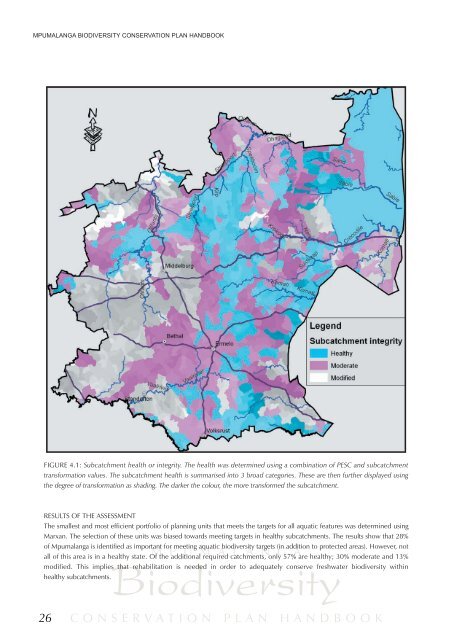Mpumalanga Biodiversity Conservation Plan Handbook - bgis-sanbi
Mpumalanga Biodiversity Conservation Plan Handbook - bgis-sanbi
Mpumalanga Biodiversity Conservation Plan Handbook - bgis-sanbi
You also want an ePaper? Increase the reach of your titles
YUMPU automatically turns print PDFs into web optimized ePapers that Google loves.
MPUMALANGA BIODIVERSITY CONSERVATION PLAN HANDBOOK<br />
FIGURE 4.1: Subcatchment health or integrity. The health was determined using a combination of PESC and subcatchment<br />
transformation values. The subcatchment health is summarised into 3 broad categories. These are then further displayed using<br />
the degree of transformation as shading. The darker the colour, the more transformed the subcatchment.<br />
RESULTS OF THE ASSESSMENT<br />
The smallest and most efficient portfolio of planning units that meets the targets for all aquatic features was determined using<br />
Marxan. The selection of these units was biased towards meeting targets in healthy subcatchments. The results show that 28%<br />
of <strong>Mpumalanga</strong> is identified as important for meeting aquatic biodiversity targets (in addition to protected areas). However, not<br />
26<br />
M P U M A L A N G A<br />
all of this area is in a healthy state. Of the additional required catchments, only 57% are healthy; 30% moderate and 13%<br />
<strong>Biodiversity</strong><br />
modified. This implies that rehabilitation is needed in order to adequately conserve freshwater biodiversity within<br />
healthy subcatchments.<br />
CONSERVATION PLAN HANDBOOK

















